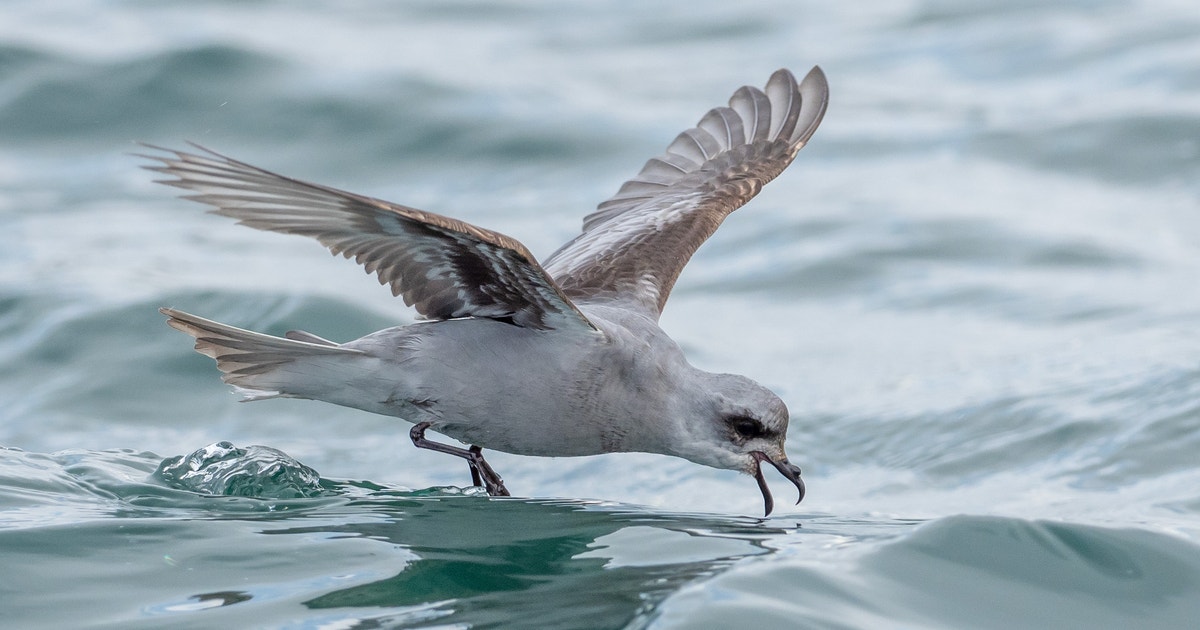For humans, drinking salt water is far from refreshing. If you’ve ever taken a dip in the ocean, you’ve probably gotten an accidental mouthful and know the nasty, dehydrated feeling that can be relieved only by a swig of fresh water. But for a seabird, drinking sea water is not just tolerable—it’s perfectly hydrating.
The secret to this superpower? Seabirds have a pair of salt glands above their eyes that act like an extra, miniature set of kidneys. The glands absorb surplus salt from the bloodstream via a network of capillaries and discharge it through ducts running down the beak and forehead. The salt, along with any other excess minerals such as potassium and calcium, then drips out of the bird’s nostrils as a goopy brine.
For most animals, quickly consuming a lot of salt triggers a condition called hypernatremia: The body retains too much water in an effort to dilute the sodium, causing bloating and high blood pressure. Some marine mammals such as seals and dolphins have extra-robust kidneys that help them process their sodium-rich seafood, though they don’t swallow ocean water on purpose. But seabirds can keep themselves healthy and hydrated while intentionally drinking salt water, thanks to their special glands.
Scientists were long aware of these organs but remained mystified by their purpose until the mid-20th century. But in 1960, Knut Schmidt-Nielsen, a comparative physiologist at Duke University, published a paper that made the connection. For the experiment, Schmidt-Nielsen injected seabirds with volumes of salt water that were previously considered lethal. The birds in his study later had what looked like runny noses, shaking their heads as they discharged a substance with a salt concentration significantly higher than that of their urine. One Great Black-backed Gull even ingested one-tenth of its body mass in sea water and eliminated the salt through its urine and nasal drip after only three hours.
All seabirds—birds that spend most of their life in or around the ocean—can desalinate, but some species rely on the function more than others, says Don Lyons, director of conservation science at Audubon’s Seabird Institute. Some, such as pelicans and gulls, appear to drink salt water only when it’s their easiest option. But others, like albatrosses, penguins, and petrels, can stay hydrated solely on salt water, which they either drink straight from the source or ingest from their fish-fueled diet. “It’s not really clear how much some of these hardcore seabirds that spend most of the year in the ocean actually need to drink,” Lyons says. “Their food naturally contains an unusual amount of water, so we’re still trying to figure out how often certain species actively seek out water alone.”
Other terrestrial birds have similar glands, too, and though they’re much smaller than those of seabirds, the organs appear to give some species an impressive tolerance for salt. For species that often reside and hunt along coastlines, like Mallards and Red-tailed Hawks, the glands likely allow them to handle especially salty meals, says Aimee M. Van Tatenhove, a quantitative ecologist at the Cornell Lab of Ornithology. And for ostriches—which are not usually beach-dwellers, but often live in dry environments—researchers suspect that the organs help them regulate their body’s salt content when fresh water is in short supply.
All seabirds can desalinate, but some species rely on the function more than others.
This physiological process is likely increasingly helpful for birds as climate change drives extreme heat and freshwater scarcity, Van Tatenhove says, though little research has been done to determine if species are becoming more dependent on salt water. “We’re seeing megadroughts and water consumption by humans out in the American West to the point where some of the only water available is super salty,” she says. “We anticipate that birds out there are going to have to start relying more on saltier resources unless something drastically changes.”
Salt glands alone are unlikely to make or break seabirds’ survival in the long run, Lyons says. Species are being threatened by habitat loss from urbanization and rising ocean temperatures, and seabird populations around the world have declined by 70 percent since 1950. Their continued existence, Lyons adds, ultimately relies on human efforts to curb fossil fuel emissions and conserve and restore habitats.
Still, researchers say studying seabirds’ feats of water resilience could help to shed light on how to help populations rebound and endure. “They’re amazing athletes,” Lyons says, “and we still have a lot to learn.”

